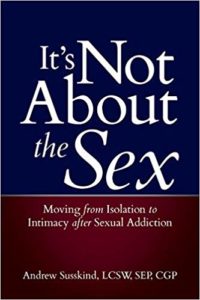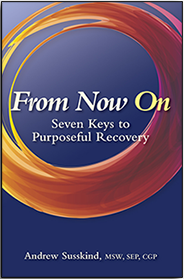(originally published July 2010—revised August 2021)
Recovery from compulsive sex can feel like a rollercoaster with unexpected twists and turns behind every corner. Fortunately, the ride can get much smoother and less tumultuous as time and healing unfolds.
Long-term recovery is quite different than early recovery. In the beginning, stopping out-of-control sexual behaviors is the main focus while long-term recovery makes room for sex-positive, expansive experiences. In early recovery you start to notice the damaging activities of the past while long-term recovery often reveals clarity and inner wisdom. Early recovery sifts through the wreckage of the past while long-term recovery considers limitless possibilities.
Unfortunately, there is an absence of forward-thinking support for those who have been sexually sober for many years. Through the lens of coaching, psychotherapy and twelve-step wisdom, this article explores the passage beyond early recovery into this uncharted territory.
Here is the good news. In recent years there has been a paradigm shift in the mental health profession making room for strengths and resources in addition to deficits and disorders. Mental health professionals no longer limit their research and clinical work to psychopathology or diagnosis. Instead, Positive Psychologists such as Dr. Martin Seligman now study the elements of happiness, gratitude and signature strengths.
Because twelve-step fellowships often follow the disease model of addiction introduced by Alcoholics Anonymous (AA), there tends to be a focus on sexual compulsion as an illness. Sexual recovery fellowships have fewer participants than more-established groups like AA resulting in a shortage of old-timers in the rooms. Consequently, there can be an emphasis on early recovery—the trials and tribulations of stopping behaviors rather than building capacity for healthier patterns of sex, intimacy and relationships. Taking the lead from Positive Psychology, it may be illuminating to see what would happen if more discussion focused on purpose, engagement and sexual wellness.
Webster defines joy as the emotion evoked by well-being, success, or good fortune. This implies that someone actually knows what they desire, and herein lies a challenge. The longer someone is in recovery, priorities often shift from simply surviving toward deeper pursuits of meaningful connection. As a result, provocative questions can be explored such as what brings you sexual fulfillment and life satisfaction?
As part of the Twelve Steps, an inventory of resentments and character defects is typically written and shared with a sponsor. What if you also developed a joy inventory? Beginning with your earliest recollection of joy, list as many fun and joyful experiences you can remember. Focusing on positive memories builds an inventory of pleasurable moments which creates new neural pathways and the brain starts to recognize these pleasant memories as an alternative to suffering.
In his book Overcoming Addictions, Deepak Chopra states that the absence of joy is the cause and the effect of addiction. Therefore, joy and well-being may be a preventive measure as well as a safety net for future compulsive behaviors. In Part Two we will consider specific ways to support long-term recovery.




